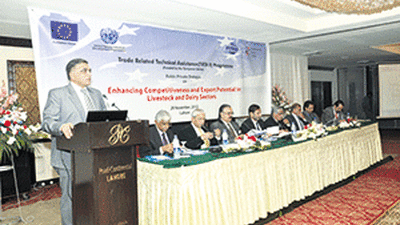Market access map: Pinning down export costs and regulations
The upgraded version of the tool was developed with financial support from the European Commission, World Bank and ITC Trust Fund donors, and has been available online since 30 June 2012 at macmap.org. Essentially, Market Access Map is a free of charge interactive analytical web tool designed to help exporters, trade support institutions, trade policymakers and academic institutions in developing countries prioritize and analyse export markets, as well as prepare for market access negotiations. The redeveloped Market Access Map provides information on:
• Non-tariff measures (NTMs) - this is a new area providing technical, health, environmental, safety and other regulations by product and market with links to further information about national regulations;
• Tariffs, including trade agreement preferences, applied by 191 countries and faced by 239 countries and territories; current tariffs are available together with historical time series data;
• Tariff rate quotas;
• Trade remedies;
• Rules of origin for preferential trade agreements;
• Bound tariffs of World Trade Organization members;
• Trade flows.
Users can also find ad valorem equivalents for all non ad valorem duties and perform aggregations of products and countries as well as simulate tariff reduction scenarios.
Patricia Francis, Executive Director of ITC, explains: 'It is very clear that smaller companies find NTMs more burdensome than do big companies. Researching and complying with market requirements is mostly a fixed cost for a company. The smaller the company, the bigger the cost as a proportion of the company's turnover. ITC is providing Market Access Map to assist developing countries in analysing both market opportunities and market requirements. Ultimately, the analysis tool facilitates business integration into international markets and provides policymakers with concrete, timely data to support their decision-making processes.'












